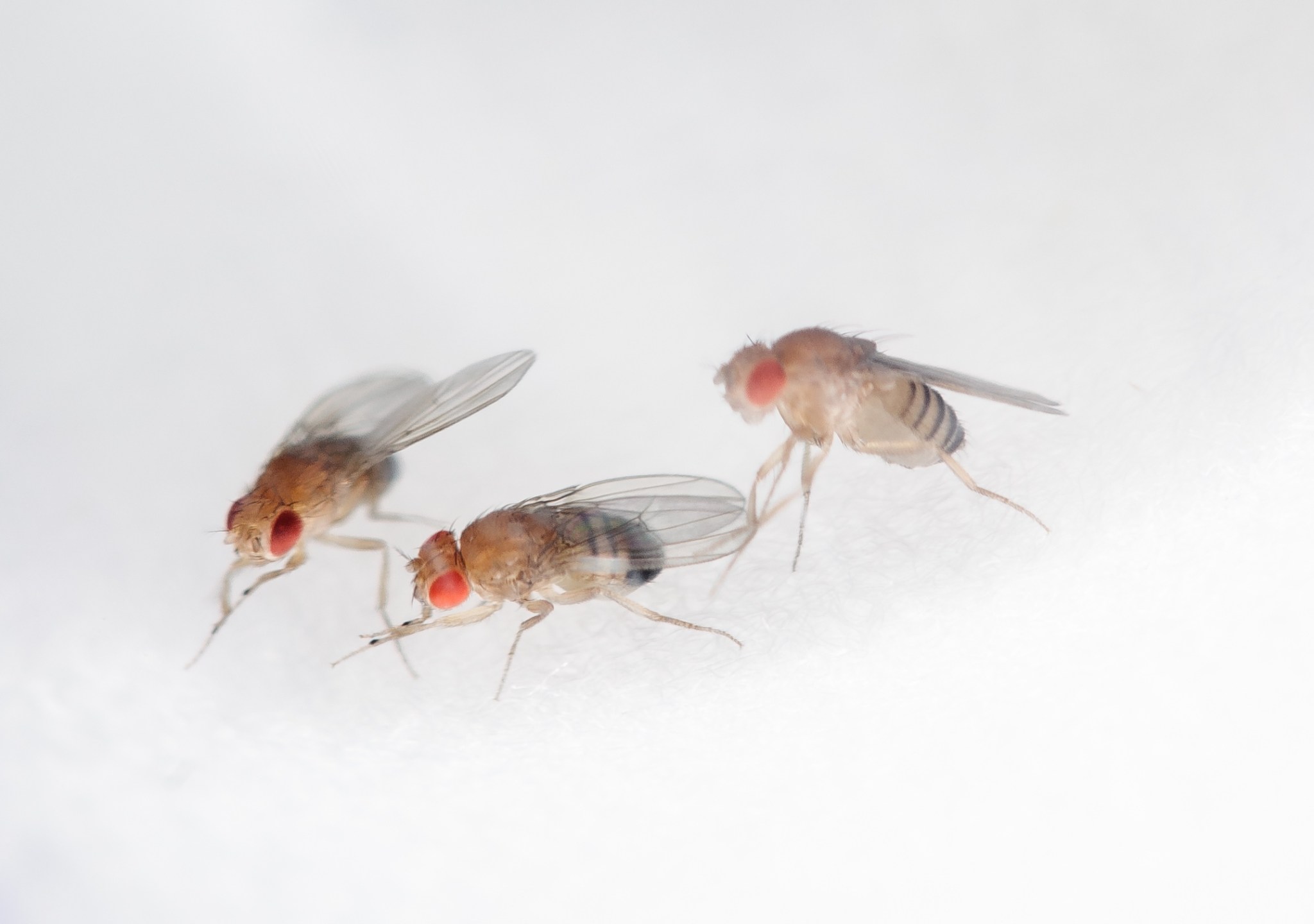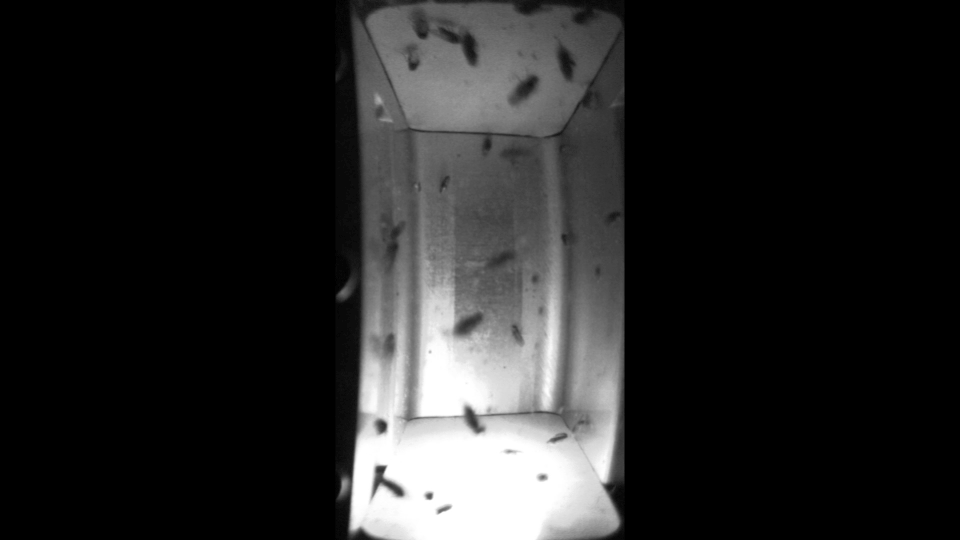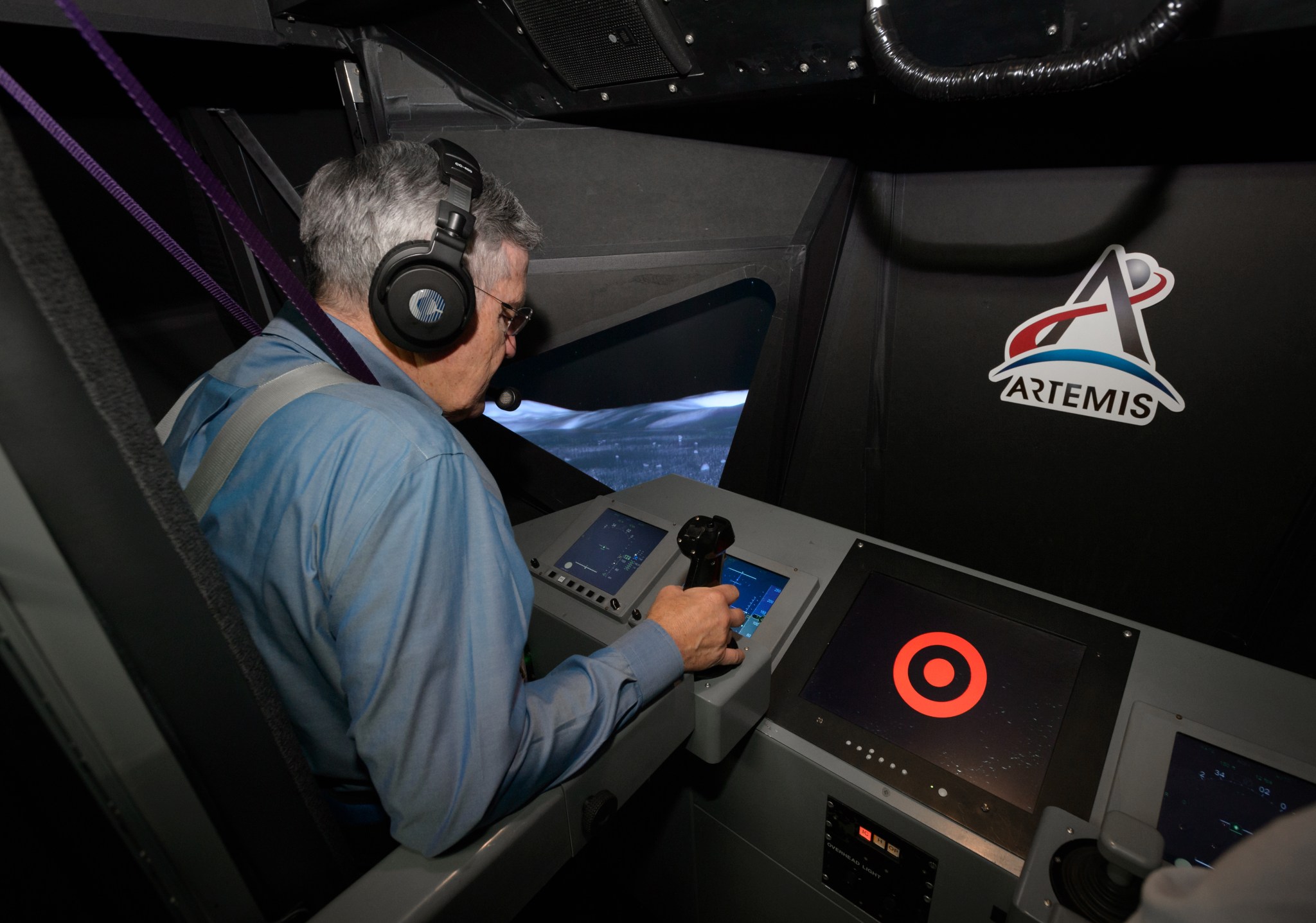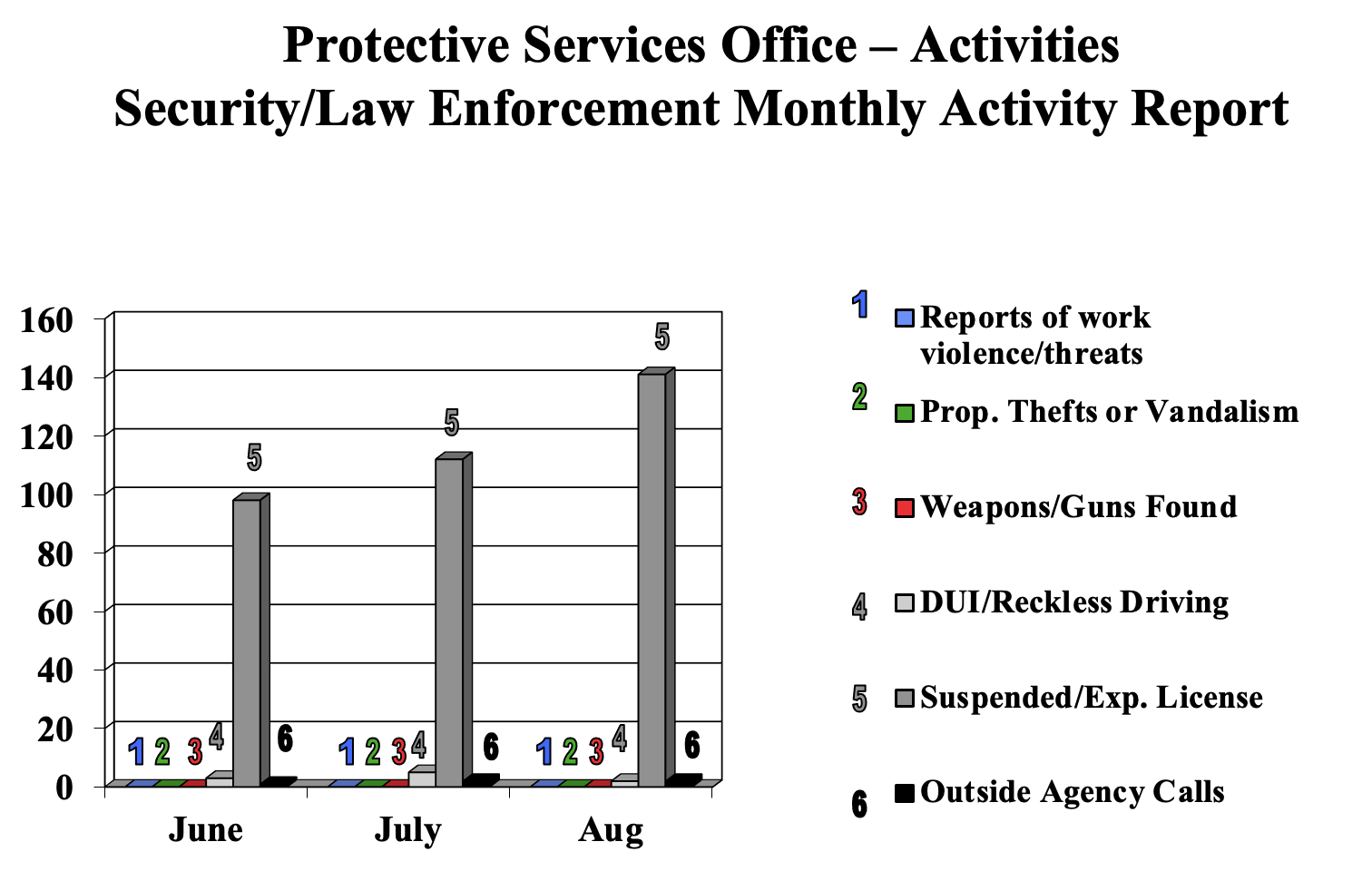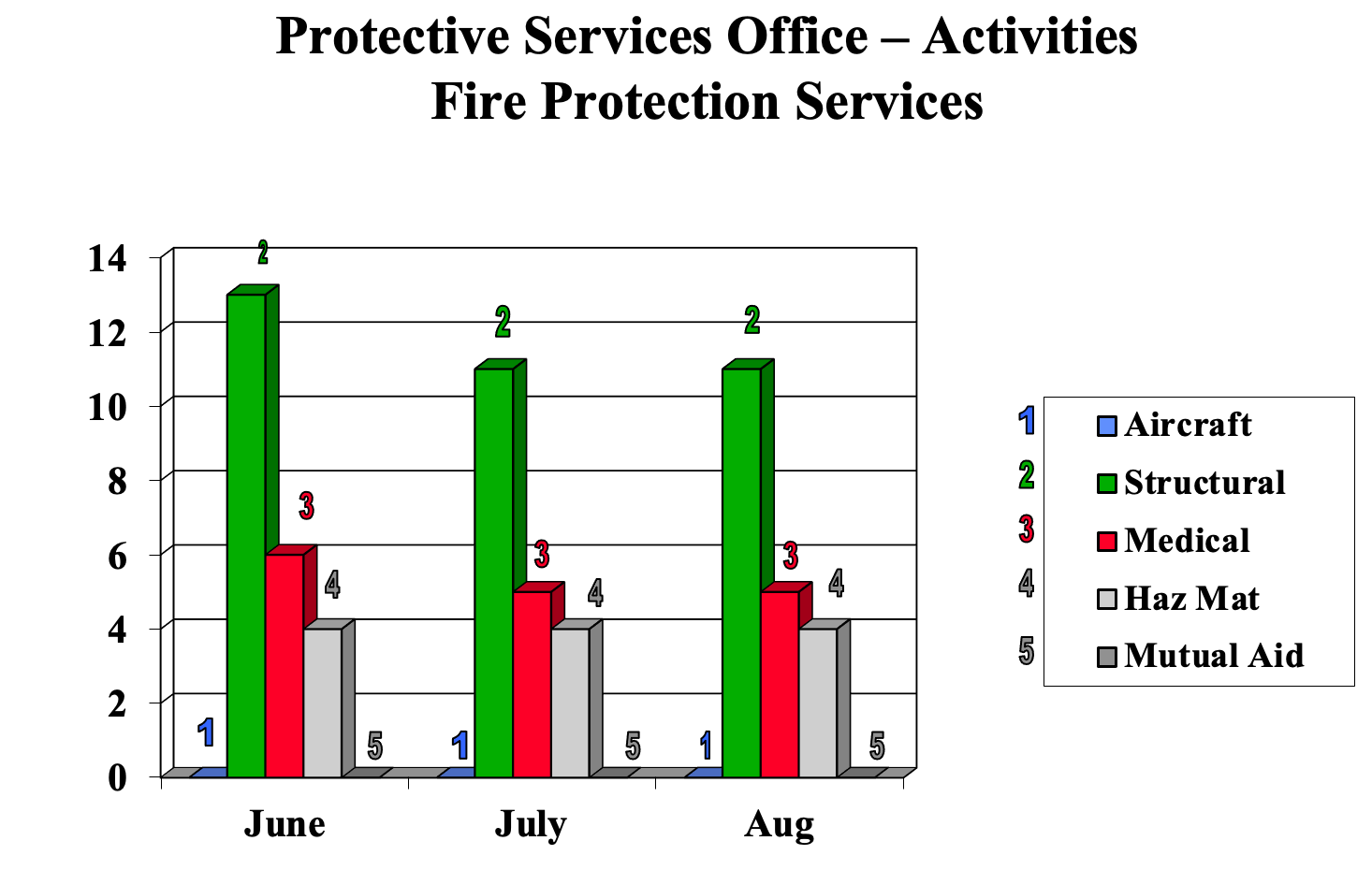Artificial Gravity Provides Partial Protection for Biology in Space
by Frank Tavares
Space travel to the Moon, Mars, and beyond can expose astronauts to extreme conditions, causing potential health issues. To prepare for future long-duration missions, NASA studies how the effects of space – changes in gravity, radiation, and more – impact “model organisms,” or other kinds of life that are biologically similar to humans. New findings from a study using fruit flies on the International Space Station suggest that space travel has an impact on the central nervous system, but that artificial gravity provides partial protection against those changes.
“Microgravity poses risks to the central nervous system, suggesting that countermeasures may be needed for long-duration space travel,” said Dr. Janani Iyer, a Universities Space Research Association (USRA) project scientist at NASA’s Ames Research Center in California’s Silicon Valley and an author on the paper published today in Cell Reports. “As we venture back to the Moon and on to Mars, reducing the harmful effects of microgravity will be key to keeping future explorers safe. This study is a step in the right direction to explore the protective effects of artificial gravity in space and to understand the adaptation to Earth conditions after returning from space.”
Fruit flies are the ideal organism for this kind of research due to their similarities to humans. There’s a significant amount of overlap between the cellular and molecular processes of flies and humans. Almost 75% of the genes that cause disease in humans are shared by fruit flies, meaning the more we learn about fruit flies, the more information scientists have to investigate how the space environment may impact human health. Flies also have much shorter lifespans – about two months and reproduce in two weeks. The three weeks the flies spend in space is equivalent to about three decades of a human’s life, giving scientists more biological information in a shorter time span.
Understanding the Gravity of the Situation
In this study, scientists sent flies to the space station on a month-long mission in a newly developed piece of hardware called the Multi-use Variable-gravity Platform (MVP), capable of housing flies at different gravity levels. The flies in this hardware had access to fresh food as they lived and reproduced. By using distinct compartments, the MVP allowed for different generations of flies to be separated. On the space station, one group of fruit flies experienced microgravity similar to their human counterparts. Another group was exposed to artificial gravity by simulating Earth’s gravity on the space station using a centrifuge – an instrument that spins to simulate gravity. While on the space station, cameras in the hardware recorded behavior of these “flyonauts”. At different points in time, some of the flies were frozen and returned to Earth to study their gene expression.
After the flies returned to Earth, onboard a SpaceX Dragon capsule that splashed down in the Pacific Ocean, the flies were brought back to Ames for further analysis. Upon arrival, scientists at Ames worked around the clock for two days to sort the flies and perform behavioral and biochemical tests. The same analyses were run on a set of flies kept on Earth as a control experiment, to provide a baseline to compare the data from the “flyonauts.”
This study was one of the first of its kind to take an integrated approach to how the space environment impacts the nervous system. Scientists looked at the fly behavior by observing movement of flies as they moved about in their habitat, changes at the cellular level in the fly brain, how gene expression modifications impact the nervous system, and more. Observed changes came in many forms, some easy to see simply by looking at the cameras included in the MVP’s compartments, others that required further study on the return to Earth. The behaviors studied included inflight fly activity and climbing ability upon return to Earth. Flies have a natural response to climb up their container when tapped down, and this was used as a test of their abilities post-flight. Flies in microgravity were more active than those in the artificial Earth gravity, but also showed difficulty during this climbing test after returning to Earth.
More in-depth analysis on the ground immediately post-flight revealed neurological changes in flies exposed to microgravity. As the flies acclimated to being back on Earth after their journey, the flies that experienced artificial gravity in space aged differently. They faced similar but less severe challenges to the flies that were in microgravity.
Paving the Way for Future Studies
The results from this study suggest that spaceflight causes stress in the fly’s cells that lead to negative behavioral and neurological impacts, as well as changes in gene expression in the fly brain. However, using artificial gravity can provide temporary relief to the difficulties microgravity in space causes on the nervous system of a fruit fly, even if there are still long-term health complications.
Because fruit flies and humans are very different organisms, despite their genetic overlaps, these results can’t speak directly to what humans will experience over a lifetime in space – but it paves the way for scientists to follow up when designing ways to protect astronauts as they travel to destinations with a variety of gravity levels in the future.
“With the upcoming long-duration deep space missions, where astronauts will be exposed to varying levels of gravity, it is imperative that we understand the impacts of altered gravity on the neurological function,” said Dr. Siddhita Mhatre, a KBR Wyle senior scientist at Ames and an author of the published paper. “If we can use artificial gravity to delay space-related deficits, maybe we can extend the future mission timelines. And flies in space, alongside the astronauts, will help to further our efforts in keeping astronauts healthy.”
SiliCon 2022 Draws Thousands to the Bay Area – NASA Ames Exhibit Booth Enthralls Visitors
Visitors at “SiliCon with Adam Savage 2022” learned from NASA Ames scientists, engineers, and educators about their work here at the center. With NASA’s upcoming Artemis 1 launch paving the way for humans to return to the Moon and onto Mars, there was no better time to visit NASA’s exhibit, panel discussions, and more, to learn what we’re working on at Ames. Visitors learned about upcoming missions, they had the chance to take a photo with a full-size model of VIPER, NASA’s next Moon rover, and also were able to listen to panelists speak about topics such as Artemis, advancing equity at NASA, and internship opportunities within the agency. The event was held Aug. 27-28, at the San Jose Convention Center.
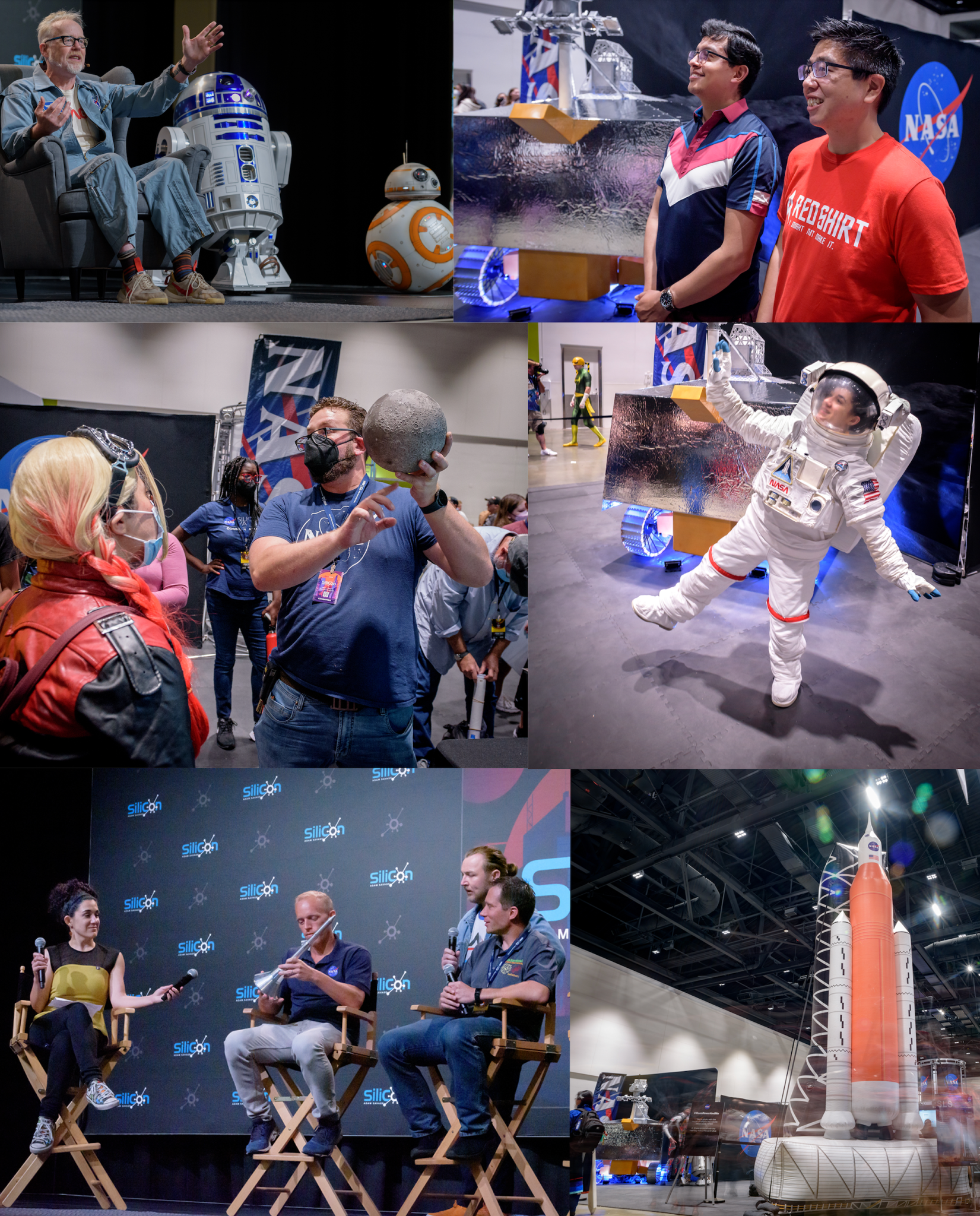
NASA Associate Administrator Bob Cabana Visits Ames Facilities
by Gianine Figliozzi
NASA Associate Administrator Bob Cabana pilots the lunar lander at the Vertical Motion Simulator (VMS) facility during his tour at NASA’s Ames Research Center in California’s Silicon Valley on Sept. 21, 2022. This unique facility can help prepare NASA astronauts, including the first woman and person of color, to land on the Moon’s surface as part of the Artemis program.
As part of Cabana’s visit to the west coast, he learned about NASA’s two new X-planes at NASA’s Armstrong Flight Research Center in Edwards, California on Tuesday.
During his visit to Ames, Cabana took a tour of the center that featured highlights of NASA facilities critical to the nation’s research and development activities involving flight in the air and space.
These included:
- The Advanced Operations Lab – the control center for Ames’ Unmanned Aircraft Systems Traffic Management effort. The facility supports research into many applications using drones where these low-flying aircraft could save lives, time, and money, such as wildfire response;
- FutureFlight Central – a 360-degree, fully immersive, simulated airport flight control tower– that helps NASA identify and solve difficult airport and air traffic control issues in our nation’s airspace;
- the National Full-Scale Aerodynamics Complex, the largest wind tunnel in the world. The NFAC is used to determine basic aerodynamic characteristics of full-scale and large-scale fixed-wing planes and rotorcraft. The facility is managed and operated by the U.S. Air Force;
- the Arc Jet Complex, a high-energy wind tunnel that simulates the intense heating experienced by spacecraft during hypersonic atmospheric entry. This facility is used for testing materials and designs to protect spacecraft from heating during planetary entry;
- the Biosciences Collaborative Facility, a state-of-the-art laboratory that brings space biology, astrobiology, and bioengineering researchers together to advance NASA’s strategic goals in both human exploration and science;
- the NASA Advanced Supercomputing Facility, which offers world-class supercomputing resources and services customized to meet the needs of users from NASA centers, academia and industry. The facility’s computing power is necessary to meet the agency’s unique needs for Earth and space science studies, space exploration, and advances in aviation;
- and the NASA Research Park, a shared-use research, development, and education campus for industry, academia, non-profits, and government.
What are NASA’s Technology Educational Satellites?
by Frank Tavares
NASA’s TechEdSat series of technology demonstrations aims to bring small payloads back to Earth or to the surface of Mars – while pushing the state of the art in a variety of CubeSat technologies and experiments.
TechEdSat is a series of collaborative projects and missions that pairs college and university students with NASA researchers to evaluate new technologies for use in small satellites, or CubeSats. Students do the hands-on work – designing, building, and testing CubeSat spacecraft systems and analyzing the results – for each flight mission, under mentorship of engineers at NASA’s Ames Research Center in California’s Silicon Valley.
CubeSat technologies enable the efficient use of small satellites for a variety of research and technological purposes, and the mission focus of the TechEdSat series is bringing small payloads from orbit back to Earth. Advancing the entry, descent, and landing, or EDL, systems for CubeSats – and sharing new technology with the spaceflight community – will allow more researchers access to cost-effective flight opportunities, leading to more technology testing and science in space.
For example, being able to send CubeSats from orbit to Earth could provide on-demand delivery of samples or hardware from the International Space Station or future space platforms. This technology could also allow future small spacecraft missions to reach the surface of Mars or other worlds in our solar system.
Some of the systems used to control the EDL of a spacecraft are somewhat like driving a car: they use braking, steering, and navigation systems to reach home. Unique to spaceflight is the need to mitigate the intense heating that comes from speeding though the atmosphere.
So far, all of the TechEdSat spacecraft have been intentionally burned up in Earth’s atmosphere at the end of their missions. These initial missions run tests at altitudes up to over 250 miles above Earth, working out the kinks of the first phases of EDL systems to make sure that the systems work and are safe. The ultimate goal is to develop a complete EDL system and eventually to land a CubeSat at a defined location on Earth.
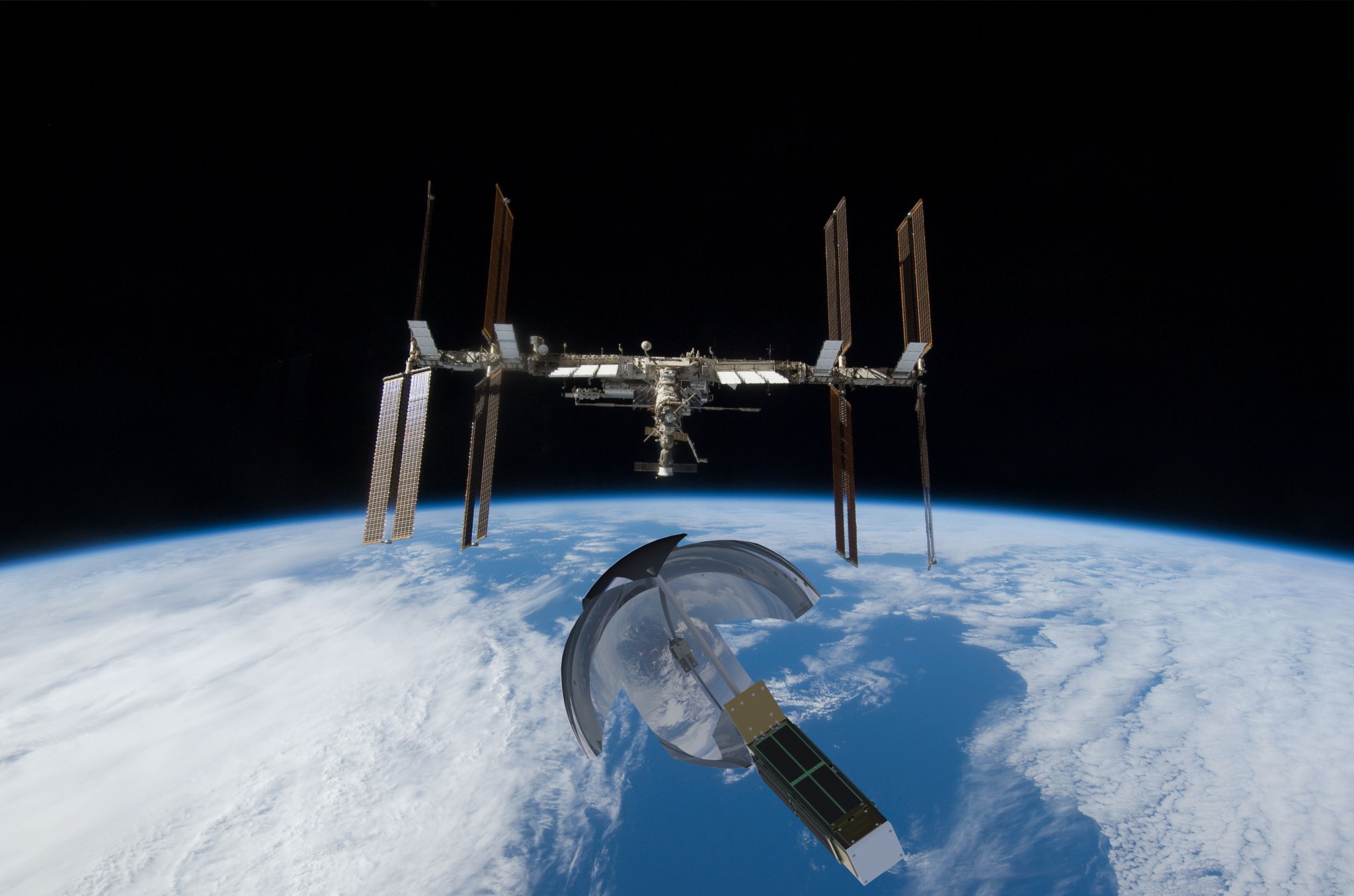
A variety of technologies are developed through TechEdSat missions, including the exo-brake. This new technology is a “wing” that can slow a spacecraft down and eventually allow it to return to the Earth, or potentially other worlds like Mars, in a controlled way. Foil constructions, using plastic and metal materials, origami-folded into designs that can expand, reshape, and be controlled by commands sent via space-to-space communication links. To facilitate this, the TechEdSat series is also advancing innovative solutions for communications in low-Earth orbit.
Current communications methods are expensive and too bulky for CubeSats, and the new technologies could allow researchers to extend these concepts to lunar and planetary missions, extending the capabilities of small satellites past low-Earth orbit. Also, recent innovations have allowed for much larger onboard processing power. Using graphic processor units that use electric analog circuits to mimic the human nervous system, known as or neuromorphic processors, adds much more “thinking” capability in these small boxes.
The next evolution of the TechEdSat project is the Nano-Orbital Workshop platform, or NOW, which includes collaboration from industry and other government organizations all working together at a rapid pace with the ability to have a high cadence of flight missions.
The ability to test these new technologies in space at such a low cost is made possible by the standardized systems inherent to the CubeSat concept, including the system that ejects them into space from larger spacecraft. The CubeSat platform has standard sizes for both satellites and their interfaces with deployment mechanisms, like a household plug and socket. Special dispensers help the CubeSats fit with the deployer on the space station and other vehicles. CubeSats come in various sizes, with the basic unit coming in a cube, roughly the size of a square tissue box and able to fit in your hand. CubeSats use a standard sizing scheme, where each 10-centimeter cube is considered one unit, or U. TechEdSat’s first mission was 1U in size, with recent missions expanding up to 6U.
Ames’ Role
NASA’s Ames Research Center in California’s Silicon Valley is home to the TechEdSat team, chartered to prototype novel solutions to technical spaceflight challenges by providing access to space. Student interns, young professionals, and volunteers supply labor and ingenuity and receive invaluable hands-on experience with real spaceflight hardware. By taking advantage of low-cost flights on balloons, sounding rockets, and orbital opportunities for small satellites, the TechEdSat series makes testing innovative technology in space more accessible. Satellites from the series have been launched directly from rockets, or with a stopover on the International Space Station.
Learn more:
- NASA podcast: Marc Murbach Talks About Building Small Cube Satellites (2017)
- NASA landing page: Ames Engineering Directorate
TechEdSat Missions
TechEdSat-1
TechEdSat-1 launched on the Japanese H-2 vehicle from the Tanegashima Launch Center July 21, 2012, and deployed from the International Space Station Oct. 4, 2012. The 1U CubeSat was the first U.S. CubeSat deployment from the space station. The mission evaluated space plug-and-play avionics, a way for researchers to use standardized systems to facilitate rapid software integration. The safety protocols followed for the jettison from the space station proved invaluable for future missions, and became standard practices for the space station as a launch platform. Communications were performed using amateur-band ultra high frequency receivers on the ground. The CubeSat functioned as intended for approximately six months before atmospheric re-entry May 5, 2013.
TechEdSat-2
The TechEdSat-2 mission was launched on the first Antares rocket flight April 21, 2013, and deployed within a day. It wasn’t a standalone satellite, launching alongside Ames’ first PhoneSats. The primary experiment was to determine the utility of using the Iridium satellite constellation as the primary communication link for future nanosatellites, instead of using traditional ground stations. It proved that by using the “ground stations in the sky,” the command-and-control events for future nanosatellites could be greatly improved. The experiment was successfully concluded within 36 hours. Due to the elliptical orbit, the CubeSat re-entered the atmosphere shortly after.
TechEdSat-3p
TechEdSat-3p, weighing 11 pounds, was launched Aug. 3, 2013, on the Kounotori 4 flight mission from the Japanese Aerospace Exploration Agency. It was the first 3U CubeSat deployed from the space station in November 2013. This mission successfully performed the first passive flight test of an exo-brake. This real data could now be compared to calculated aerodynamic models for the very low-density thermosphere. It was the first time an Arduino-based processor was used in the series. The processor was found to function very well in the space radiation environment. Also, more data was acquired over different altitudes for the two-way Iridium satellite constellation communication link – thus adding confidence of this protocol for future CubeSats. The mission re-entered Earth’s atmosphere Jan. 16, 2014.
Learn more:
- NASA story: NASA Launched First Exo-brake Parachute from International Space Station (2013)
TechEdSat-4
TechEdSat-4 launched July 13, 2014, weighing 11 pounds and 3U in size, and March 4, 2015, was the first NASA satellite to deploy into orbit from the space station via the NanoRacks CubeSat Deployer. The mission demonstrated improved satellite-to-satellite communications and an upgraded exo-brake system – two new technologies building on previous missions. These developments laid the groundwork for controlling an exo-brake in orbit and more frequent communications with the satellite, leading to more accurate satellite altitude and position predictions. The satellite’s structure, avionics, and payload were custom-designed by the TechEdSat-4 team to utilize its 3U volume. The hardware consisted mostly of off-the-shelf components, allowing for easily reproducible future flight variations. The satellite re-entered Earth’s atmosphere on April 3, 2015 after a four week de-orbit.
Learn more:
- NASA video: Space Station Live: TechEdSat-4 CubeSat Investigation (YouTube, 2014)
TechEdSat-5
TechEdSat-5 launched Dec. 9, 2016, on Japan’s H-II Transfer Vehicle from Tanegashima Space Center in Japan. It deployed from the space station March 6, 2017. Weighing 11 pounds at 3.5 units, TechEdsat-5 used the first modulated exo-brake to target a predetermined re-entry point. Updated radio and global positioning system hardware took the place of wired connections in the satellite, operating as a wireless “data-crossroads” between TechEdSat-5’s key components. This had previously been verified by the team during a suborbital test flight, SOAREX-8, launched from NASA’s Wallops Flight Facility in Virginia. After almost five months of successful operations, the satellite re-entered Earth’s atmosphere July 29, 2017.
Learn more:
- NASA story: NASA’s Exo-brake ‘Parachute’ to Enable Safe Return for Small Spacecraft (2016)
TechEdSat-6
TechEdSat-6 launched to the space station Nov. 12, 2017, aboard the eighth Cygnus cargo resupply flight, from Wallops. Weighing 11 pounds at 3.5 units, TechEdSat-6 was released into low-Earth orbit from the NanoRacks platform Nov. 20, 2017. TechEdSat-6 tested a technology design intended toward an on-demand return of small payloads to Earth. Building off previous missions, TechEdSat-6 used improved software and designs including an updated exo-brake and modulation control. This is the fourth TechEdSat satellite carrying a version of the exo-brake to further demonstrate the necessary elements for guided, controlled re-entry of a CubeSat. On May 14, 2018, the satellite successfully re-entered Earth’s atmosphere.
Learn more:
- NASA feature story about TechEdSat-6: NASA to Test Advanced Space Wireless Network and Device for Returning Small Spacecraft to Earth (2017)
TechEdSat-7
The seventh mission in the series launched Jan. 17, 2021, and tested various technologies, including a novel fixed exo-brake. It was designed to pack the most drag into the smallest volume, primarily to rapidly de-orbit from high altitudes. In the future, this could be applied to rendezvous with a piece of debris, then use the exo-brake to dispose of it during reentry. One of the unique features of this new design is the opposing drag device struts, which rely on internal inflation to place them in the proper orientation.
In addition, TechEdSat-7 was the test flight of a new generation of the Tardigrade omni-board which serves as a power, communications, and control board for the TechEdSat series of missions. That board houses the central microprocessor and critical communication functions, the latter of which has greater radiation tolerance. Next, more data and complete statistics are being gathered regarding the efficacy of using the Iridium satellite constellation as a means to more quickly command and control nanosatellites. In addition, a high-power diode/laser communications tracking experiment helps identify the CubeSat, as well as allows optical ground stations to practice operations for upcoming communication systems.
This mission was part of a group of NASA-sponsored nanosatellites that flew on the first commercial launch of the Virgin Orbit air-launched rocket system.
Learn more:
- NASA story: TechEdSat-7’s Flight Mission Begins (2021)
TechEdSat-8
TechEdSat-8 launched to the space station Dec. 5, 2018, aboard the 16th SpaceX cargo resupply flight for NASA and deployed from the space station Jan 31, 2019. The first long 6U CubeSat developed by the team, TechEdSat-8 was designed to fit into a single NanoRacks CubeSat Deployer launch tube. Not only was it the heaviest TechEdSat mission at 13 pounds, it had more functions and capabilities than its predecessors, introducing a 150 watt-hour power system.
The CubeSat carried propulsion experiments and seven transmitters, including the Mars radio and lunar radio experiments, testing out radio communications technology for deep space destinations. By also using the NASA’s Near Earth Network, communication technologies tested during TechEdSat-8 could provide more communication opportunities or a back-up system for upcoming cis-lunar missions. The exo-brake was also designed to be larger, with more control capability than previous missions. The satellite re-entered the atmosphere April 20, 2020.
TechEdSat-10
TechEdSat-10 launched to the International Space Station Feb. 15, 2020, aboard the 13th Cygnus cargo resupply flight for NASA, and deployed July 13, 2020. Building on the foundation provided by TechEdSat-8, this mission took many of those same technologies and enhanced them, with nine processors, a graphics processing unit, and more. TechEdSat-10 again used a long 6U design and featured an improved power system, making it the most powerful CubeSat at that size. In addition, it contained eight radios, four cameras – including a virtual reality camera experiment – and the largest iteration of exo-brake to date. It also featured the second flight of a more complex Tartigrade omni-board.
Learn more:
- NASA webinar: Topics in Advanced Communication and Design in the TES-n Nanosatellite Flight Series: Use of Iridium as a Primary Command/Control Gateway (2020)
- NASA image feature: TechEdSat-10 Deploys from the Space Station (2020)
TechEdSat-13
TechEdSat-13 launched into low-Earth orbit on Jan. 13, 2022 aboard Virgin Orbit’s LauncherOne.
This 3-unit CubeSat, weighing 6.6 pounds, is packed with technologies to test novel capabilities in flight. This includes an Artificial Intelligence / Machine Learning (AI/ML) subsystem featuring the Intel Loihi neuromorphic processor. Loihi is an advanced silicon chip that mimics the function of the human brain. TechEdSat-13 will run the first orbital flight tests of this chip and the AI/ML subsystem. It will set the stage for many different science and engineering applications of AI/ML for space platforms in the future.
TechEdSat-13 also will test an improved avionics core and a communications system that will be used to support upcoming TechEdSat flight experiments. This includes an initial test of an experiment – as part of the Cognitive Communication project at NASA’s Glenn Research Center in Cleveland – making orbit-to-ground data transfer more efficient. This capability, called User Initiated Service, or UIS, allows a spacecraft to schedule on-demand communications services with a ground station or space relay. UIS reduces the burden on mission operators and improves the service scheduling response time. A communication protocol and sensor suite using internal WiFi also will be tested, further enabling larger datasets to be acquired, processed, and downlinked.
TechEdSat-13 will conduct an optical tracking and identification experiment to better keep track of nano-satellites in orbit. Additionally, TechEdSat-13 will demonstrate a novel exo-brake deployment system for rapid de-orbit and disposal for future use to help mitigate orbital debris concerns. This effort also helps to set the stage for autonomous navigation for nano-satellites to drop from orbit and reach their planned destination on Earth.
Learn more:
- NASA blog: NASA Satellites Launch Aboard Virgin Orbit’s LauncherOne (2022)
TechEdSat-15
TechEdSat-15 is planned to launch into low-Earth orbit on Sept.30, 2022, aboard Firefly Aerospace’s Alpha Flight 2 mission from Space Launch Complex-2 at Vandenberg Space Force Base in California. This three-unit CubeSat weighs 9.1 pounds and carries experiments that are being advanced in TechEdSat’s Nano-Orbital Workshop (NOW) rapid flight development series.
TechEdSat-15’s primary experiment is a version of an exo-brake intended to survive much higher temperature environments – several hundred degrees – than in previous flights. It will demonstrate the next step forward in nanosatellites’ ability to target an Earth entry point.
The exo-brake is a device that applies drag in Earth’s exosphere – the uppermost reaches of the atmosphere – to slow the speed of a satellite’s descent and change its direction.
TechEdSat-15’s experiment uses improved materials for higher-temperature environments, including exo-brake material and a simple ablator on the nosecap. This is intended to allow the nanosatellite to survive deeper in the atmosphere before burning up than previous tests. This experiment will help to validate the higher heating rates, flight dynamics, and pave the way for future hypersonic and sample-return experiments.
Another experiment on TechEdSat-15 includes the Beacon And Memory Board Interface (BAMBI), which optimizes internal and external data transfer from the nanosatellite.
The TechEdSat-NOW series has multiple research goals including using the exo-brake to de-orbit high-altitude nanosatellites at end of mission to reduce issues related to orbital debris. Additionally, drag modulation has uses for sample return from low-Earth orbit as well as tailoring orbits during aero-pass maneuvers for future planetary applications.
The TechEdSat-15 project is managed by Ames and funded by the Ames Engineering Directorate. TechEdSat-15 partners include San Jose State University.
Partners:
- TechEdSat is supported by the Ames Engineering Directorate, the Ames Safety and Mission Assurance Directorate, the Ames Chief Technologist Office Center Innovation Fund, and the National Oceanic and Atmospheric Agency.
- TechEdSat and the exo-brake were funded by the Entry Systems Modeling project within NASA’s Space Technology Mission Directorate’s Game Changing Development program and the NASA Engineering and Safety Center.
For TechEdSat-7, TechEdSat-8, and TechEdSat-10:
- Launches were supported by NASA’s CubeSat Launch Initiative’s Educational Launch of Nanosatellites, managed by the Launch Services Program at NASA’s Kennedy Space Center in Florida.
For TechEdSat-13:
- Support is provided by the Cognitive Communication project at Glenn that is funded by NASA’s Space Communication and Navigation (SCaN) program at NASA Headquarters.
- Further support is provided by the Radiation Tolerant Neuromorphic Processor project at Ames and the Ames Exploration Technology Directorate.
- Spacecraft integration was funded by NASA’s Small Spacecraft Technology program.
- The Loihi processor that will be launched into space was provided by the Air Force Research Laboratory (AFRL) Information Directorate.
- Exploration Institute, LLC of Cheyenne, Wyoming and Brisk Computing, LLC of Centerville, Ohio provided software for both the AI/ML experiments and related interface. The companies’ software was developed with support from the NASA Small Business Innovation Research and Small Business Technology Transfer (SBIR/STTR) program.
- The launch is provided by the U.S. Department of Defense Space Test Program.
TechEdSat is supported by the participation of students from the following institutions:
- California Polytechnic State University in San Luis Obispo, California
- San Jose State University in California
- International Space University in Illkirch-Graffenstaden, France
- Smith College in Northampton, Massachusetts
- University of Idaho in Moscow
- University of California, Davis
- University of California, Riverside
- University of Florida in Gainesville





























